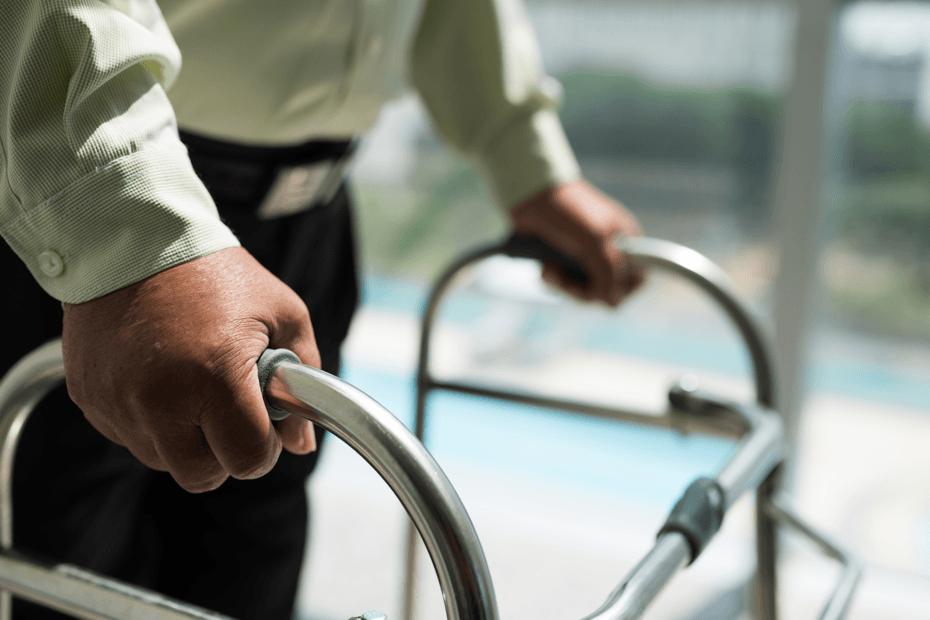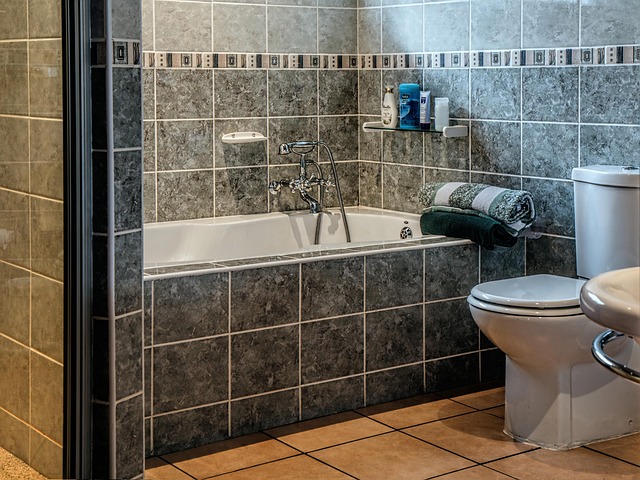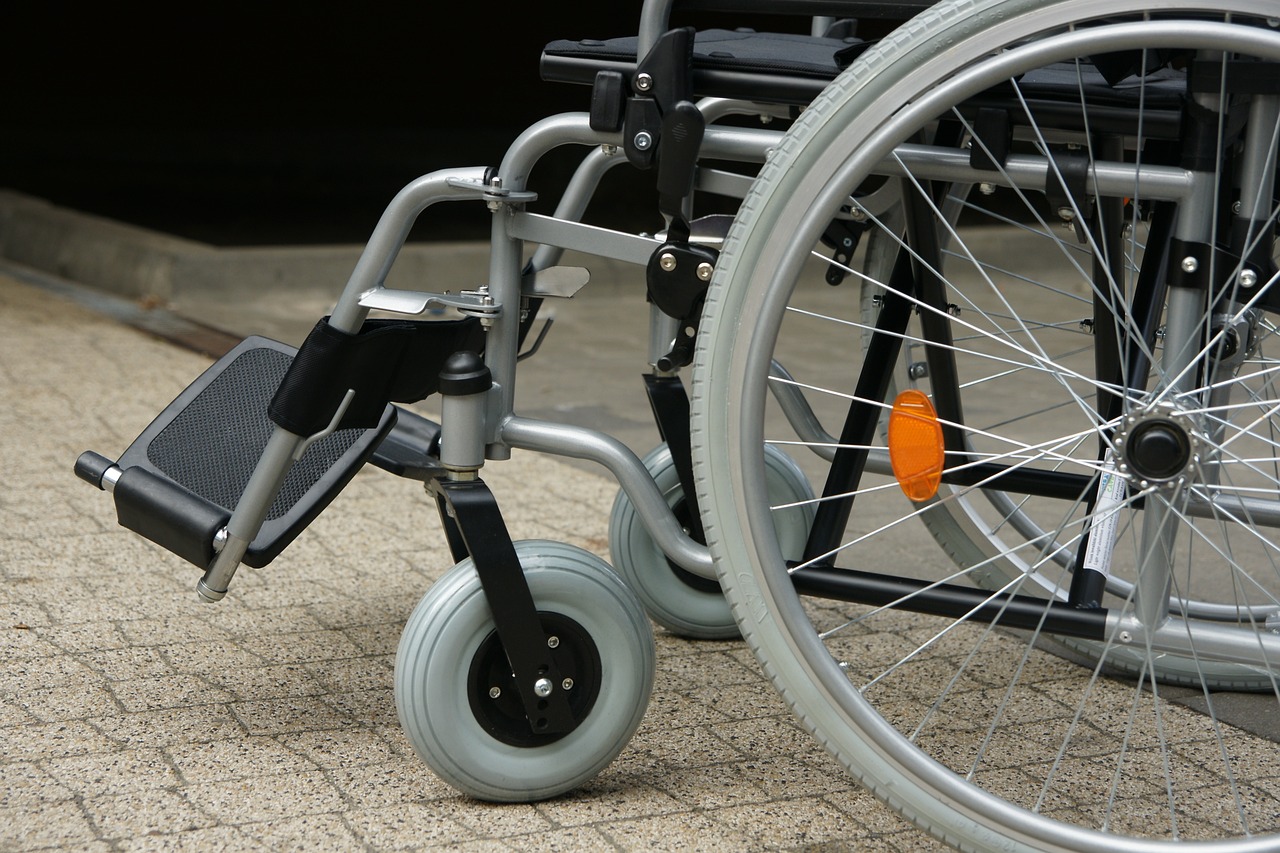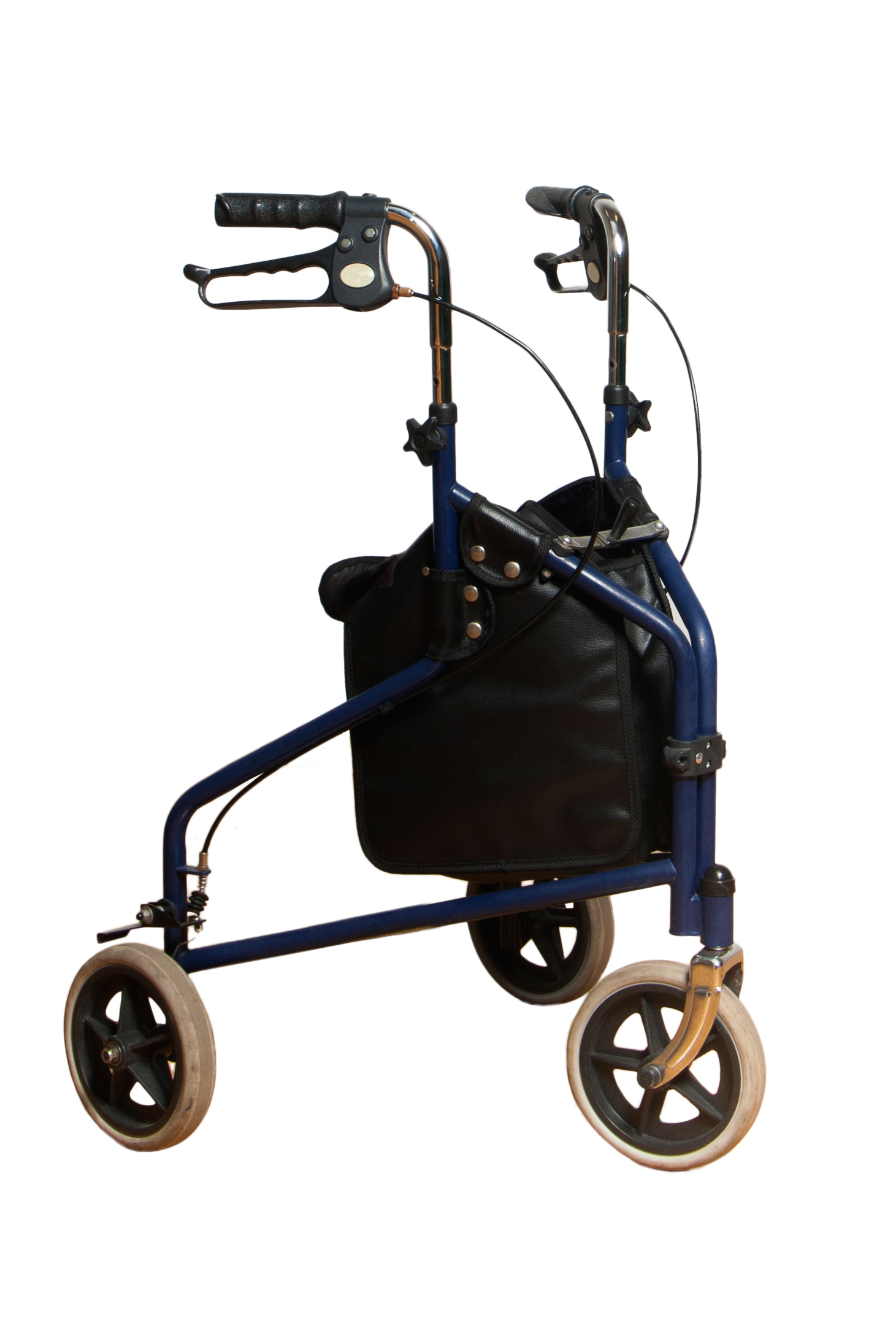Adding tennis balls to the rear legs of walkers has become so common that you can actually buy pre-cut, “walker tennis balls” at most medical equipment stores now.
And in case you’re wondering – no, there’s no difference whatsoever between the tennis balls you see on walkers and the normal kind you play tennis with.
The question then, is why are so many folks putting tennis balls on their walkers in the first place?
Is it necessary? Will the walker not function properly without them?
If you’re wondering about these questions (and more), you’ve come to the right place.
In this guide, we’ll go over the reasons for using tennis balls on your walkers as well as potential alternatives.
After reading, you’ll be able to decide for yourself whether or not you should try adding tennis balls to your walker.
Why Are Tennis Balls Used on Walkers?
As a home health physical therapist, I get asked about walkers and tennis balls all the time.
And it’s a great question, especially for seniors who’ve never used a walker before.
The truth is, no, walkers don’t need to have tennis balls placed on the rear legs to function properly, but there may be situations where doing so is helpful.
Some walker legs don’t slide that smoothly over hardwood or carpet surfaces and adding tennis balls can improve this.
I’ve also seen situations where the walker legs are actually scratching the floors and in these cases, the tennis balls can help protect the flooring from damage.
And even though some may say that having brightly colored balls on the walker is unattractive, it does help make the walker legs stand out – which can help reduce the chances of seniors and caregivers tripping over them.
Overall, tennis balls can be beneficial for walkers for a few reasons:
- Improved Glide: They can reduce friction on indoor surfaces like hardwood, tile, or carpet, allowing the walker to slide more easily.
- Noise Reduction: Tennis balls can minimize the noise caused by dragging metal legs on hard floors.
- Surface Protection: They prevent the metal ends of the walker from scratching or damaging flooring.
- Increased Visibility: Brightly colored tennis balls can make the walker more noticeable and reduce the risk of tripping.
I wanted to point out that I’ve seen other websites mention that adding tennis balls to a walker improves its stability and helps ensure the walker doesn’t roll to far forward.
We’re each entitled to our own opinion, but personally, I don’t find this to be true.
Adding a tennis ball to a rear leg may increase its surface area a little, but it’s too small of a difference to add any significant stability to the walker.
And I’ve never seen a patient that’s having a hard time using a front wheeled walker become more stable by adding tennis balls – just isn’t going to happen.
If you find that a front wheeled walker is to too unstable, you may need to switch to a standard walker.

Downsides of Using Tennis Balls
While they can serve a purpose, tennis balls have their downsides too. These include:
- Durability Issues: Tennis balls can wear down quickly, especially on rough outdoor surfaces.
- Hygiene Concerns: They can collect dirt, germs, and moisture, making them unsanitary over time.
- Aesthetic Concerns: Some people find tennis balls unattractive or unprofessional on walkers.
- Difficult to Put On: If you decide to cut your own tennis balls, you have to be really careful not to cut yourself.
Alternatives to Tennis Balls
Tennis balls have become the go-to solution for improving a walker’s ability to glide over flooring, but there are other options out there.
Several products are specifically designed to replace tennis balls and provide similar or better functionality:
Glide Caps
Glide caps are the smooth plastic caps that attach to walker legs, offering durability and easy movement.
Most walkers come standard with glide caps, so if you find these slide smoothly over your floors, there’s probably no reason to invest the time and trouble of attaching tennis balls.
And if your walker’s original glide caps wear down, you can buy replacement glide caps for essentially the same cost as tennis balls.
Walker Skis
Walker skis are curved attachments that resemble skis and attach to the rear legs, aiding in smooth gliding.
Skis are ideal for both indoor and outdoor use and it’s been my experience that they tend to offer the smoothest glide of all the options.
Walker skis also tend to last longer than tennis balls and are usually easier to install (no risky cutting involved).
Pre-Cut Tennis Balls
Available in stores, these come pre-slit for easier attachment, allowing folks the option to avoid having to cut your own tennis balls.
These are more convenient, but again, most really are just normal tennis balls that have been cut – so there’s no reason to invest a lot of money in these.
Prices on walker tennis balls will vary and I’d suggest going with more affordable ones.
Speaking of which, please never buy “walker tennis balls” at a medical equipment store because you’ll likely pay 2x as much.
You can get a 4 pack of pre-cut balls on Amazon for ~$7, which isn’t that much more expensive than standard tennis balls.
How To Attach Tennis Balls To a Walker
Adding tennis balls to a walker is pretty simple, but be warned that cutting a tennis ball is a little harder than it seems.
The rubber material takes a little muscle to get through, making it easy to cut yourself.
Materials Needed
- A pair of tennis balls
- A utility knife or box cutter
- A marker
Step-by-Step Instructions
- Mark the Cut: Use a marker to draw a small “X” on one side of each tennis ball. This will guide your cut.
- Make the Incision: Carefully use a utility knife to cut along the marked “X.” The cut should be deep enough to allow the walker’s leg to fit snugly into the ball.
- Test the Fit: Insert the walker leg into the slit. Adjust the cut if needed to ensure a secure fit.
- Secure the Ball: Once the ball is in place, gently twist it to ensure it’s tightly attached and won’t slip off during use.
- Repeat for the Other Leg: Follow the same steps for the second tennis ball.
Safety Tips
- Always cut away from your body when using a knife to prevent injuries.
- Consider using pre-slit tennis balls if you’re uncomfortable cutting them yourself.
- Ensure the balls are securely attached to avoid accidents during use.
Do Walkers Always Need Tennis Balls?
No, not all walkers require tennis balls or similar accessories.
Walkers with built-in wheels on all four legs (rollators) or specialized gliders usually don’t need them.
And if your front wheeled walker is gliding smoothly over your flooring without tennis balls, don’t feel like you have to add them.
However, for standard walkers with no wheels or only two front wheels, gliding aids like tennis balls or alternatives can make a significant difference in ease of use.
Final Thoughts
Ok, I hope that answers everyone’s questions.
Long-story-short: no, walkers don’t need tennis balls, but they can be helpful in situations where your walker isn’t gliding smoothly over your floors.
Tennis balls can enhance the functionality of certain walkers by improving glide, reducing noise, and protecting floors.
However, they’re not always the best or most durable solution.
Consider your mobility needs, environment, and aesthetic preferences when deciding whether to use tennis balls or alternatives like glide caps or walker skis.
For personalized advice, consult a healthcare professional or mobility expert to ensure your walker is as effective and safe as possible.
And as always, feel free to leave a comment or question below and I’ll get back to you shortly.




